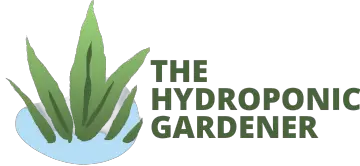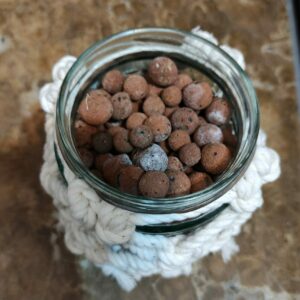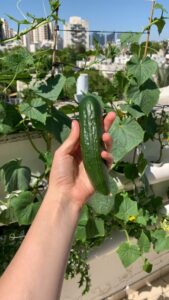If you’re into hydroponic gardening, then you’ve probably heard about clay pebbles. Also known as Hydroton, Leca Clay, and Expanded Clay Pebbles, these little guys are made of clay and have some great benefits for your plants. Let’s discuss what clay pebbles are, how to use them, and some of the benefits they offer. We’ll also answer some common questions about clay pebbles so that you can decide if they’re the right choice for your garden!
What are clay pebbles and where do they come from?
Clay pebbles are small clay bubbles, or rocks, that is used as a growing medium by small growers and large growers alike.
These expanded clay pellets are made from natural clay that has been fired at high temperatures. The high temperature makes hydroton sturdy yet light and porous enough to allow air and water to flow freely through the particles. You can even find organic expanded clay pebbles!
Does hydroton absorb water?
Yes, clay pebbles do absorb water. One of the main benefits of clay pebbles is that they hold onto the water while still allowing air to flow through them, providing your plants with the nutrients and moisture they need for optimal growth. In other words, they are ideal for hydroponic gardening because they allow water and nutrients to be absorbed easily by your plants, while also providing excellent drainage so that excess moisture does not build up or cause root rot. Additionally, clay pebbles tend to be more affordable than other hydroponic growing mediums, making them an attractive choice for gardeners on a budget.
How can clay pebbles be used in hydroponic gardening?
Clay pebbles can be used in a variety of different hydroponic systems, including drip systems and Kratky-based systems like dutch buckets and deep water culture. They are typically used as a growing media and you can put them inside net pots to hold the plant in place.
They can also be mixed with other materials like coconut coir or perlite to improve drainage and aeration.
Many people mention their low water-holding capacity as a disadvantage – but since our plants grow in water – this is irrelevant. Actually, it’s even better this way since the plants’ roots should touch the water, and the plant itself should stay above water, held by the pebbles.
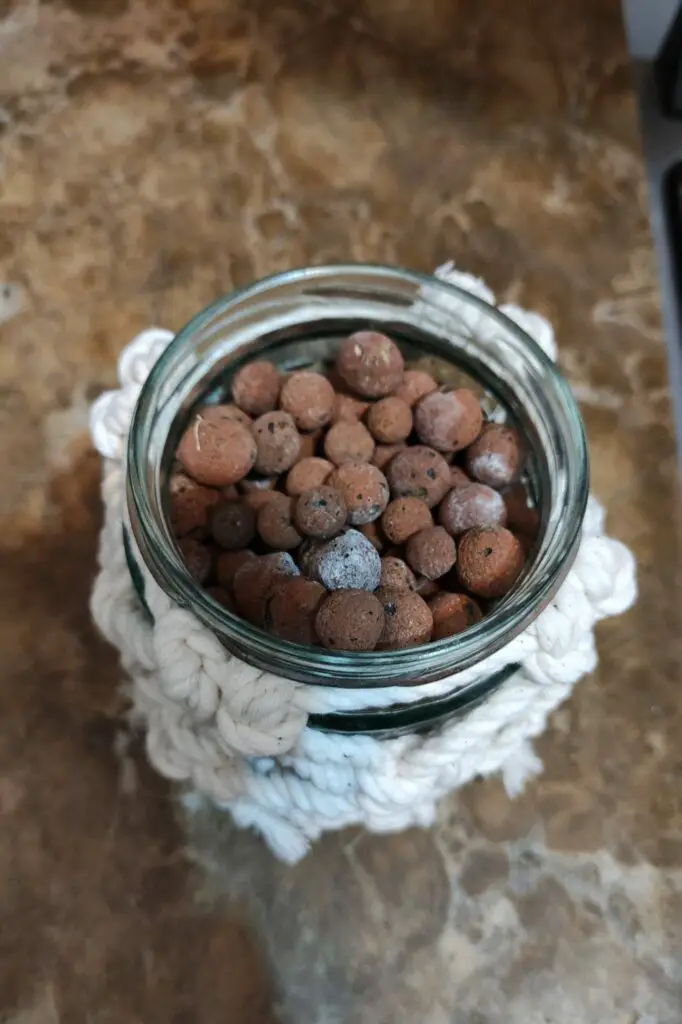
How to use clay balls for plants?
Overall, clay pebbles are a versatile and effective choice for any hydroponic garden. There are several different ways to use clay balls for plants in hydroponic systems.
To start, you can simply place the clay pebbles directly into your growing tray or container and add your plants on top. You can also mix clay balls with other materials, such as coconut coir or perlite, to improve drainage and aeration. Some hydroponic growers even add clay balls to their nutrient solution, allowing them to easily control the amount of water and nutrients that your plants receive.
Some use clay pebbles for seed germination, but I prefer germinating my seeds on paper towels or, preferably, cotton wool.
Do you need to wash hydroton?
There is no set rule as to whether you need to wash hydroton clay pebbles before using them in your garden. While some growers may choose to wash their clay pebbles, this is not always necessary and can depend on the quality of your clay pebbles and how they are being used. If you do decide to rinse your clay pebbles, simply run them under a gentle stream of water for a few minutes and allow them to dry completely before using them in your garden.
Can you reuse hydroton clay pebbles?
Yes, clay pebbles can be reused many times over without losing their effectiveness. In fact, clay pebbles are often considered a more sustainable option for hydroponic gardens due to their ability to be used repeatedly.
However, it’s a good idea to inspect your clay pebbles periodically for signs of wear and tear, as well as any discoloration or damage that may be caused by fertilizer buildup. If you notice any issues with your clay pebbles, simply replace them with new ones and continue reusing the old ones in another part of your garden.
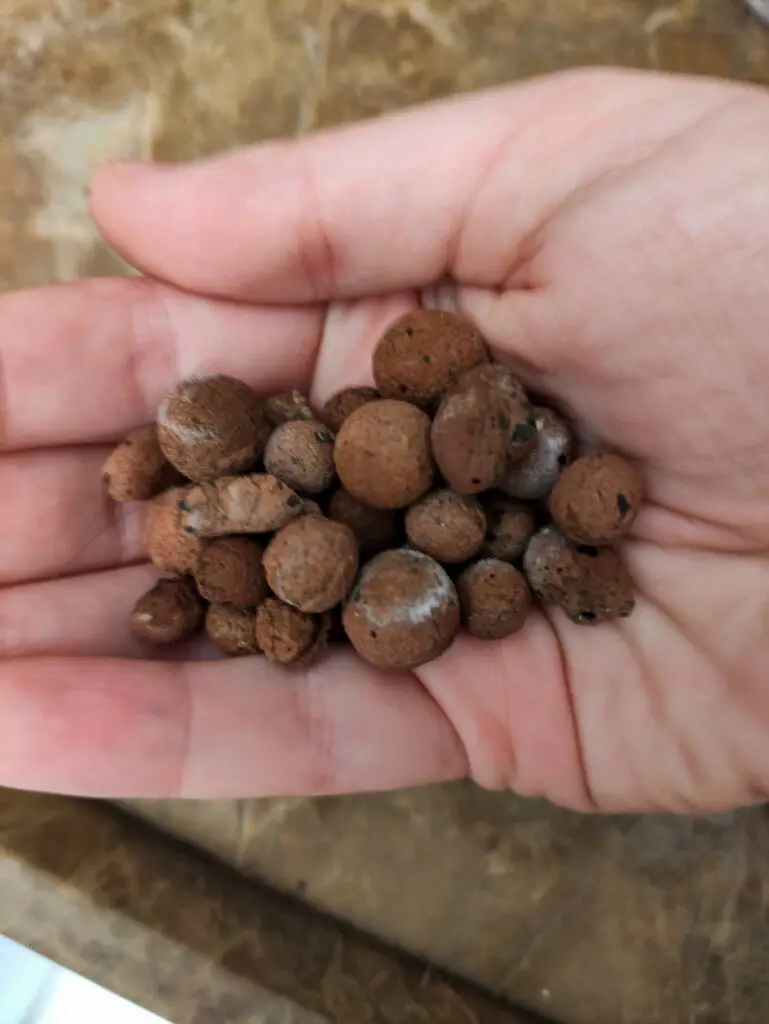
What are some of the benefits of using clay pebbles for your plants?
Some of the key benefits of using clay pebbles for your plants in a hydroponic system include improved water retention, enhanced drainage and aeration, and greater control over nutrient levels. Additionally, clay pebbles are beautiful and relatively affordable compared to other hydroponic growing mediums, making them an attractive choice for gardeners on a budget.
Let’s talk more about each one:
Improved water retention
One of the main benefits of using clay pebbles for your hydroponic plants is their ability to hold onto the water while still allowing air to flow through them. This allows your plants to easily absorb nutrients and moisture, without becoming bogged down or developing root rot due to excess water buildup.
Enhanced drainage and aeration
Clay pebbles are also prized for their ability to improve drainage and aeration in hydroponic systems. This allows your plants to easily draw up the water and nutrients they need, while also allowing excess moisture to drain away without causing any damage or root rot.
Greater control over nutrient levels
Hydrotons allow you to easily control the nutrient levels in your garden, making them an excellent choice for hydroponic growers who want to ensure optimal growth for their plants.
Environmentally friendly
Clay pebbles are an environmentally friendly medium. They are reusable, can be easily recycled, and do not require the use of any harsh chemicals or fertilizers. In addition, clay pebbles help to improve water retention and drainage in your plants, making them an excellent choice for gardeners who are looking for sustainable methods of growing plants.
Looks
Clay pebbles are often praised for their beautiful appearance. They usually come in dark brown, like soil, but they also exist in colors like blue and white. Not your common grow medium.
Affordability
In addition to their many other benefits, clay pebbles are also relatively affordable compared to other hydroponic growing mediums. They are large in size but lightweight, so you can fill a deep pot with them easily.
Online, you can find clay pebbles for hydroponics for as little as $3, though it’s more common to find them at around $7-$10 for 100g. This makes them an attractive option for gardeners on a budget who want to take advantage of the many advantages of hydroponics without breaking the bank.
Are there any drawbacks or downsides to using clay pebbles in your hydroponic garden?
While clay pebbles have many benefits to offer hydroponic gardeners, there are also a few potential drawbacks or downsides to being aware of.
For example, clay pebbles can sometimes become clogged with nutrients over time, which can cause issues for your plants.
If they break and get into your hydroponic system, they might get into the pumps and cause trouble.
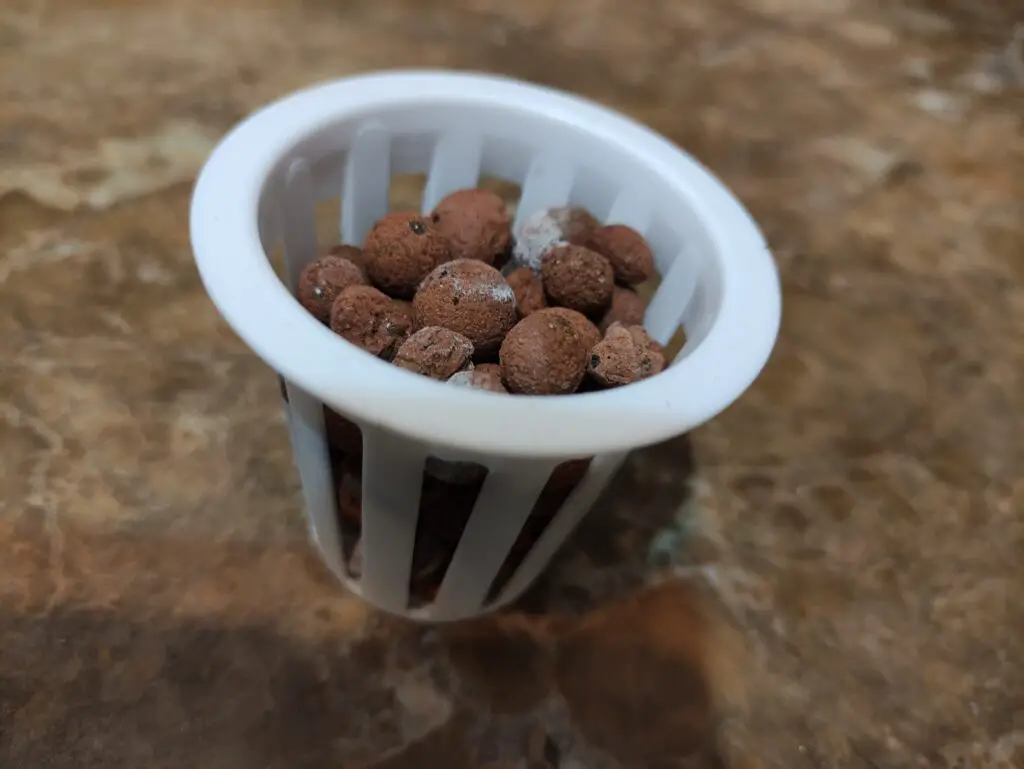
How do I know how much hydroton to buy?
When purchasing clay pebbles for your hydroponic garden, it’s important to consider the size and volume of your plants, as well as how deep you want to grow them.
The leca clay should fill the better part of your net pot, so it depends on their size.
If you use them as a growing medium inside a water container, and not as a way to hold your plants in pots so only the roots will touch the water, the rule of thumb is different.
Generally speaking, a good rule of thumb is to purchase around 100g of clay pebbles per 1-2 liters of water in your hydroponic system. However, you may want to research the specific needs of your plants and experiment a bit until you find the exact amount that works best for them.
With some experimentation, you should be able to find the right clay pebbles for your hydroponic garden, ensuring optimal growth and minimal challenges for your plants.
Conclusion
If you’re looking for an effective, efficient, and affordable hydroponic growing medium, clay pebbles may be the right choice for you. With their ability to enhance drainage and aeration, improve nutrient absorption and distribution, and support healthy root development, clay pebbles can help your plants grow big and strong. And with their beautiful appearance, wide availability, and affordable price tag, clay pebbles are a great choice for gardeners of all experience levels. So why not give them a try in your next hydroponic garden?
FAQ
1. Hydroton clay pebbles are used primarily for hydroponic gardening and can be used to support a wide variety of plant types, including fruits, vegetables, herbs, and flowers.
Hydroton clay pebbles are made from clay that has been heated at high temperatures until it becomes porous and lightweight. They are then typically coated in a layer of clay to help protect them from wear and tear.
